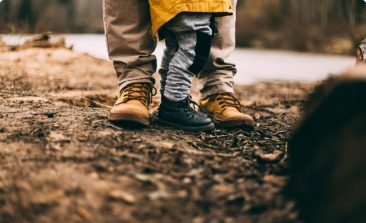Description
Have you ever noticed how your infant’s tiny fingers interlock with yours or form fists? Or how your child flinches at a loud noise? These and other reflexes that your kid was born with will diminish after they reach the milestone of being between one and three months old.
To determine whether a baby is developing as predicted, doctors look at milestones. Some babies acquire abilities sooner or later than others since there is a wide range of what is thought to be typical. Babies who were born too soon might catch up to milestones later. Discuss your baby’s development with your doctor at all times.
How much will my 1 to 3-month-old grow?
While all babies can grow at different rates, the following gives the average for boys and girls from 1 to 3 months of age:
· Weight: Average gain of about 1.5 to 2 pounds per month
· Height: average growth of about 1 inch per month
· Head Size: average growth of about 0.5 inches per month
Your baby may go through periods of increased hunger and excitement. This increase in hunger means that your baby is going through a period of rapid growth (a growth spurt). If you’re breastfeeding, you may find that at certain times of the day your baby wants to eat more frequently, and sometimes even every hour. This is called “cluster feeding”. Formula-fed infants may want to eat or drink more formula than usual during feedings.
When your baby is 1 to 3 months old, learn the signs that tell you when your baby is hungry or when your baby is full. You’ll know your baby is hungry if he seems restless, cries a lot, sticks his tongue out, or sucks his hands and lips. You’ll know your baby is full when they lose interest in feeding or fall asleep at the end of a feeding session. Remember that babies’ tummies are very small and need to be burst open after feeding to release gases that can cause discomfort.
During your 1- to 3-month check-ups, the doctor will measure your baby’s weight, length and head circumference and track their growth using a standardized growth chart. Note that there are different charts for boys and girls. Your baby may be large, small, or medium sized compared to the growth chart. As long as this growth pattern remains constant over time, your baby is probably developing well.
If your baby is born prematurely, remember that growth and development should not be compared to that of a mature child. Premature babies need to be monitored more closely and may need to be weighed more frequently during the first few months to ensure they are growing properly.
What can my 1 to 3-month-old baby do at this age?
As your baby begins to grow, you will find new and exciting skills developing. Babies at this age begin to loosen the tight muscle tone of newborns and begin to stretch their arms and legs more. While babies can progress at different rates, the following are some of the most common milestones your baby may reach in this age group:
· Some of the newborn protective reflexes begin to disappear
· The neck muscles become stronger, the head wobbles and are then held upright
· Turns head from side to side when placed on the stomach
· Brings hands or objects to mouth
· Look at the hands
· Follows light, faces, objects
· Stop noise
· Opens and closes hands
· Holds a rattle or other object, then drops it
· Active leg movements
At the end of the 3 months:
· Elevates head and chest when placed on the stomach
· Begins to grasp objects with hands, may smack hands at hanging objects
What can my 1 to 3 month old baby say?
It is very exciting for parents to see their babies grow into social beings who can interact with others. While each baby develops language at their own pace, the following are some of the most common milestones in this age group:
-
Begins to imitate some sounds (coos, vowels)
-
Screams become more purposeful and differ based on hunger, fatigue, and other needs
What does my 1 to 3 month old baby understand?
A baby’s understanding and awareness of the world around them increases during this time. While babies can progress at different rates, the following are some of the most common milestones in this age group:
-
Knows familiar voices, especially from their parents
-
Smile in response to others
-
Responds to social contact, can coo
-
Moves arms, legs, and body in rhythm with the voice of the other
You might also like
Parenting Updates: Subscribe Now!

ALL UPDATES
Go from pregnancy to adolescents with our email bulletins, loaded with reasonable, modern data about bringing up youngsters and taking care of yourself as a parent.
SUBSCRIBE NOW
MOVIE REVIEWS
Find the best motion pictures for your family with our youngster amicable surveys. Search new deliveries and more seasoned motion pictures by age, rating and type.
SUBSCRIBE NOW
MENTAL HEALTH RESOURCES
Is it safe to say that you are an expert working with families? Get data about kid, adolescent and parent psychological well-being and prosperity.
SUBSCRIBE NOW











































